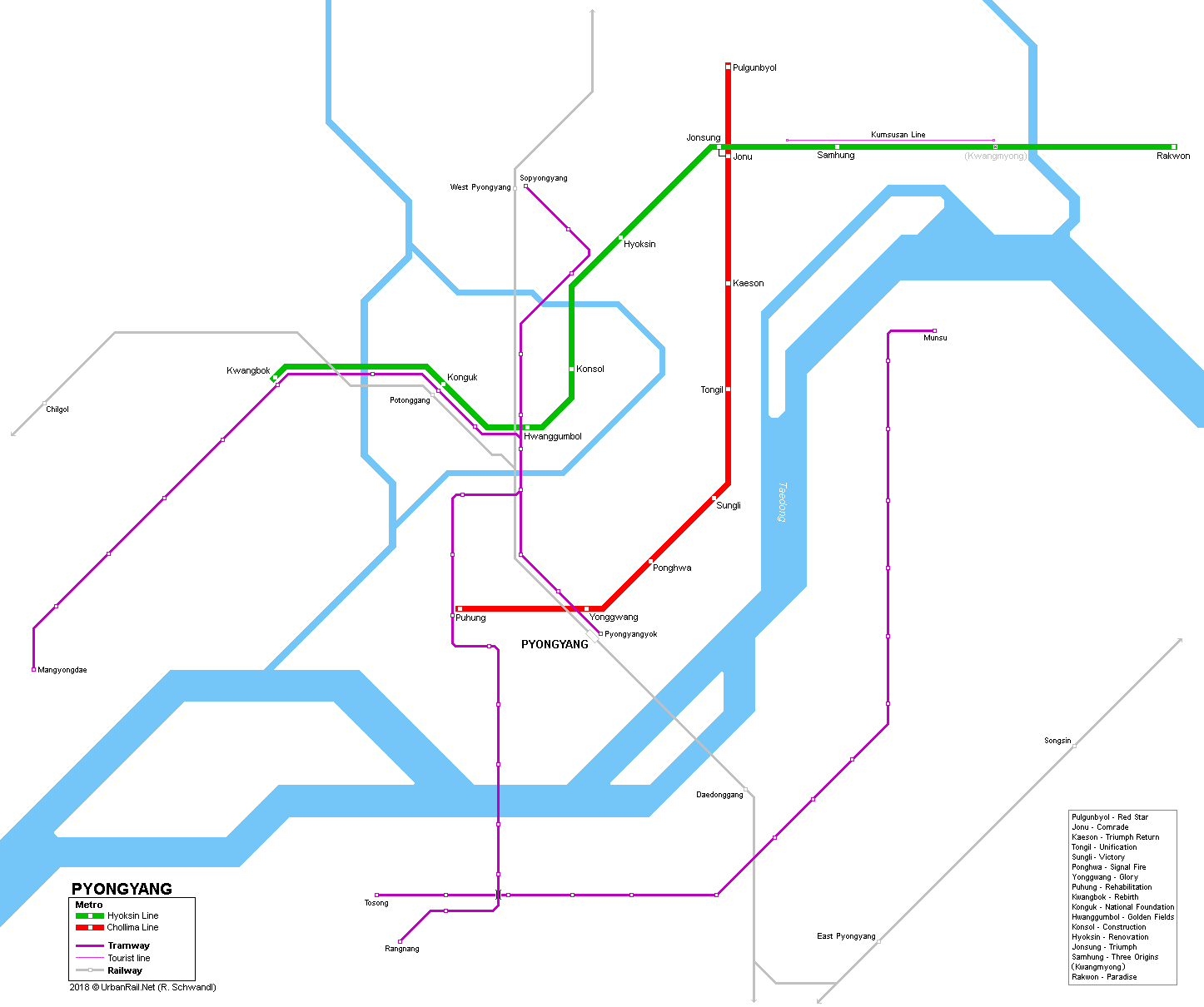
|
[ UrbanRail.Net ] [ Europe ] [ Americas ] [ Asia ] [ Africa ] [ Oceania ] [ News ] [ Books ] [ Links ] |
|
PYONGYANG
|
| North Korea |

|
Metro
|
|
The enigmatic city of Pyongyang is capital of the Democratic People's Republic of Korea (North Korea) with an estimated population of 2.9 million. It is also one of the oldest cities on the Korean peninsula. Construction of the metro began in the mid-1960s, with technical support from the USSR and China. Operated by the Transport and Communication Commission, the first section opened in 1973, with the full system reaching its current 22.3 km in 1985. Stations are opulent with socialist realist overtures and their names do not refer to a geographical location, but to themes related to the socialist revolution (e.g. Renovation, Victory, Unity, etc). They lie up to 100 m underground, acting as civil defence shelters. Kwangmyong is currently closed, apparently because it's too close to the Kumsusam Memorial Palace. The original Chinese DK4 stock was replaced by ex-Berlin trains (O&K and LEW) in the 1990s and, in 2015 the first domestically built (Kim Chong-tae) train started operating. The system has third-rail power supply (825V), track gauge is 1435 mm. On both lines, 3 and 4-car trains operate with 5-7 min headways.
|
|
Chollima
Line
|
|
Named after a mythological winged horse, construction of this fully underground line began in 1968 with operations inaugurated in autumn 1973 as a 6.5 km section between Pulgunbyol and Ponghwa. In 1987 the line was extended 2.6 km southwest and was known as the Mangyongdae Line, although it operates as a single designation Chollima Line with through-running. This newer section hosts the two most lavish stations on the system, Puhung and Yonggwang. The central stations of Kaeson, Tongil and Jonu have also recently been modernised. Puhung – Pulgunbyol; 9.1 km; 8 stations 06
Sep 1973: Ponghwa - Pulgunbyol (6.5 km)
|
|
Hyoksin Line |
|
Pyongyang’s second metro line (translated as ‘Renewal’) commenced operations in 1975, running in the north of the city from Rakwon to Hyokshin (7.3 km). The remainder of the line opened to the west in 1978, bringing the fully underground line to 13.2 km with 9 stations. Kwangmyong station was subsequently closed in 1995 and Jonsung, where transfer to Jonu station on the Chollima Line is possible via underground corridor, was modernised in 2020. Kwangbok – Rakwon; 13.2 km, 8 stations 09
Oct 1975: Hyokshin – Rakwon (7.3 km) |
|
Photos
|
|
..
|
|
|
|
|
|
Links
|
|
Stopping all Stations - The Pyongyang Metro at Earth Nutshell Simon Bone's Pyongyang Metro Page includes many maps and a lot of older photographs Pyongyang Metro at Wikipedia Pyongyang Tramway at Wikipedia
|
|
|
2007 © Robert Schwandl (UrbanRail.Net)